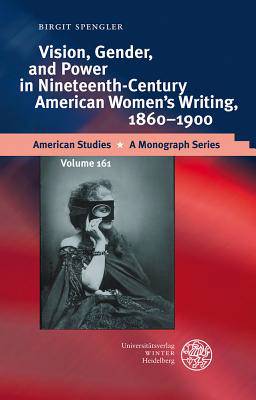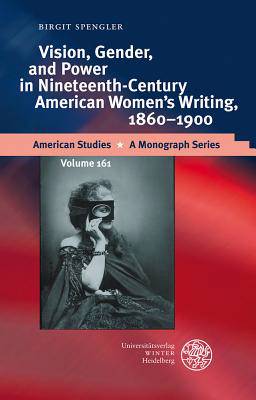
- Afhalen na 1 uur in een winkel met voorraad
- Gratis thuislevering in België vanaf € 30
- Ruim aanbod met 7 miljoen producten
- Afhalen na 1 uur in een winkel met voorraad
- Gratis thuislevering in België vanaf € 30
- Ruim aanbod met 7 miljoen producten
Zoeken
Vision, Gender, and Power in Nineteenth-Century American Women's Writing, 1860-1900
Birgit Spengler
Hardcover | Engels
€ 103,45
+ 206 punten
Omschrijving
Vision and visual practices form a constant topic in the fiction of 19th-century American female authors. Based on Michel Foucault's assumption that an epistemic shift in the visual organisation of power and knowledge marks the onset of modernity and on developments in visual technology and philosophical reasoning, this study explores the ways in which issues of vision are addressed by American women writers before the ostensible 'visual turn' of the late 19th and early 20th centuries. Authors such as Elizabeth Stoddard, Lousia May Alcott, Harriet Prescott Spofford, Metta Fuller Victor and Anna Katharine Green demonstrate a fundamental concern with the epistemological, social, and gender implications of visual practices. In their works, vision is exposed as a social and cultural practice, a means of power and control that structures social relations in gender-, class-, and race-specific ways. However, these authors also explore strategies of resistance and modes of empowerment through visual practices. 19th-century American women writers thus anticipate concerns that became dominant around the turn of the century and provide an important tradition upon which late 19th-century 'innovators' such as Edith Wharton and Henry James could build upon.
Specificaties
Betrokkenen
- Auteur(s):
- Uitgeverij:
Inhoud
- Aantal bladzijden:
- 400
- Taal:
- Engels
Eigenschappen
- Productcode (EAN):
- 9783825354565
- Verschijningsdatum:
- 5/01/2008
- Uitvoering:
- Hardcover
- Formaat:
- Genaaid
- Afmetingen:
- 135 mm x 211 mm
- Gewicht:
- 566 g

Alleen bij Standaard Boekhandel
+ 206 punten op je klantenkaart van Standaard Boekhandel
Beoordelingen
We publiceren alleen reviews die voldoen aan de voorwaarden voor reviews. Bekijk onze voorwaarden voor reviews.








